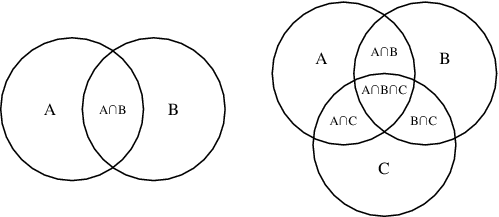PROBABILITY
There are 3 methods of estimation. They are:
- Ratio Chance : A ratio represents, for every amount of one thing, how much there is of another thing.Example 4/5
- Percentage Chance : In percentage, we talk about "x" out of 100. Percentage is reported as a ratio but the sum adds up to 100. Example 30% (30 out of 100)
- Probability : Is a measure or estimation of how likely it is that something will happen or that a statement is true. Probabilities are given a value between 0 (0% chance or will not happen) and 1 (100% chance or will happen).The higher the degree of probability, the more likely the event is to happen, or, in a longer series of samples, the greater the number of times such event is expected to happen. Example: Tossing a coin. The probability of head occurring is 0.5.
There are 3 approaches to calculate probability. They are:
- A priori : A priori probability can most easily be described as making a conclusion based upon deductive reasoning rather than research or calculation.
Example : Consider how the price of a share can change. Its price can increase, decrease or remain the same. Therefore, according to a priori probability, we can assume that there is a 1-in-3, or 33%, chance of one of the outcomes occurring (all else remaining equal).
- Empirical Probability : Is one where we don't have prior information, but information is collected. Empirical probability is determined analytically, that is, by using our knowledge about the nature of experiment rather than through actual experiment. Empirical probabilities are point estimates and occur under one condition.
Example : If you flip a coin ten times and get seven heads, your empirical probability is 7 in 10.
If we assembled a return distribution based on the past 20 years of data, and then used that same distribution to make forecasts, we have used an empirical approach.
- Subjective Probability : A probability derived from an individual's personal judgment about whether a specific outcome is likely to occur. Subjective probabilities contain no formal calculations and only reflect the subject's opinions and past experience. Subjective probabilities occur under different conditions and have a range of values.
Example : Probability of getting a tender.

Sample Space:All possible outcomes of an event or an experiment
Mutually Exclusive Events:Two events are 'mutually exclusive' if they cannot occur at the same time.
Example : tossing a coin once, which can result in either heads or tails, but not both.
Independent Events:Independent Events are not affected by previous events.
Example:When we toss a coin three times each time the probability of getting a head is 0.5
LAWS OF PROBABILITY:There are mainly three laws in probability.They are
1.ADDITION LAW:probability that A or B will happen is the sum of the probabilities that A will happen and B will happen.
2.CONDITIONAL LAW:It is the probability that an event will occur, when another event is known to occur or to have occurred. If the events are A and B respectively, this is said to be "the probability of A given B".
3.MULTIPLICATIVE LAW:If X and Y are two independent events with probabilities P(X) and P(Y) respectively, then the probability that X and Y will both happen is found by multiplying the two probabilities together.
Bayes Theorem :
It is a extension to conditional probability law.
The theorem expresses how a subjective degree of belief should rationally change to account for evidence.
Usually used to find the cause of a given experimental result
P(Ai|B)=P(B|Ai)P(Ai)/∑j=ik(B|Aj)P(Aj)
No comments:
Post a Comment